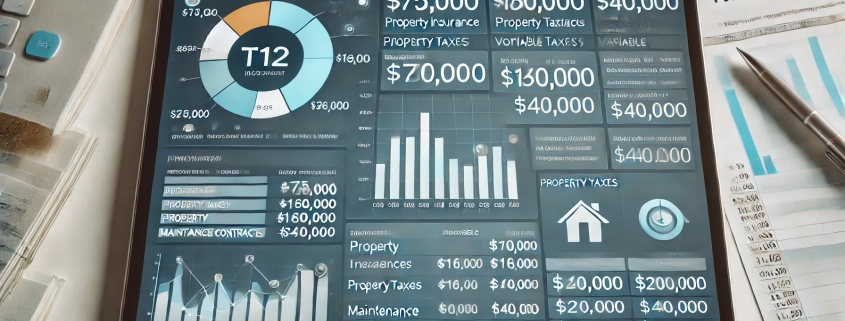Fixed Costs
Costs that do not change based upon of the property’s level of occupancy or operation. For example. the landlord’s monthly insurance premiums will generally remain fixed regardless of whether the property is 50% or 80% occupied. In some real estate financial models, the user is given the option to choose what percentage of a given expense is fixed with items such as insurance and taxes deserving 100% fixed treatment. This is in contrast to Variable Costs, which do vary with the property’s level of operation.
Putting ‘Fixed Costs’ in Context
Ocean State Capital, a real estate investment firm, has recently acquired The Elmwood Gardens Apartments, a 150-unit market-rate multifamily property located in Providence, Rhode Island. This acquisition is part of Ocean State Capital’s core investment strategy, targeting stable, cash-flowing assets in well-established markets.
The Elmwood Gardens Apartments is a five-building complex built in the late 1990s, with amenities including a fitness center, swimming pool, and parking for residents. The property’s current occupancy stands at 95%, but the firm is aware that this figure could fluctuate due to natural market cycles or seasonal factors. Despite potential changes in occupancy, certain operational costs will remain steady—these are known as Fixed Costs.
Fixed Costs in the Case of The Elmwood Gardens Apartments
For this property, the primary fixed costs include:
- Property insurance: $75,000 annually
- Property taxes: $160,000 annually
- Maintenance contracts (e.g., landscaping, pest control): $40,000 annually
Together, these expenses total $275,000 per year and represent costs that do not fluctuate with occupancy. Whether Elmwood Gardens is 95% occupied, 100% occupied, or experiences a temporary drop to 85% occupancy, these costs remain the same.
Impact of Fixed Costs on Financial Performance
In a real estate financial model, fixed costs are particularly important when projecting the property’s Net Operating Income (NOI). Let’s assume the annual gross potential rent for The Elmwood Gardens is $2,250,000. When factoring in vacancy and collection loss at 5%, the Effective Gross Income (EGI) would be $2,137,500.
Now, let’s consider operating expenses. In addition to the fixed costs, the property incurs variable expenses—such as utilities, management fees, and repair costs—which fluctuate depending on occupancy. These variable costs might total around $500 per unit at 95% occupancy, or approximately $71,250 for the 150-unit complex.
NOI Calculation:
NOI = EGI – (Fixed Costs + Variable Costs)
NOI = 2,137,500 – (275,000 + 71,250) = 2,137,500 – 346,250 = 1,791,250
As you can see, the fixed costs account for a significant portion of the overall expenses. Importantly, these fixed costs remain constant, regardless of the property’s occupancy rate. If occupancy drops to 90%, the variable costs will decrease, but the fixed costs will still remain at $275,000, further emphasizing the stability and predictability of these expenses in real estate financial modeling.
Why Fixed Costs Matter to Investors
Understanding the concept of fixed costs is crucial for investors like Ocean State Capital because it allows them to better predict and manage a property’s cash flow. Since these costs don’t fluctuate with occupancy, they offer a measure of financial stability that makes core investments like The Elmwood Gardens Apartments attractive. Investors can anticipate the impact of fixed costs on NOI and adjust their expectations for profitability accordingly, even if market conditions lead to fluctuations in rental income.
In this example, Ocean State Capital can confidently project that—no matter the minor occupancy changes—fixed costs will remain predictable, allowing the firm to focus on managing variable costs and optimizing revenue through property enhancements or rent adjustments.
Click here to get this CRE Glossary in an eBook (PDF) format.

